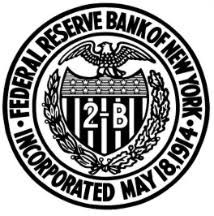Patricia Geraghty (May 25)
BTRM Faculty Opinion
Has Climate Change Gone Out of Fashion for Banks and Corporates? – Patricia Geraghty, BTRM Faculty
For much of the past decade, climate change was one of the most fashionable concerns for banks and corporations. Sustainability reports filled with net-zero pledges, ESG funds attracted billions, and “green” became the defining buzzword of corporate strategy. Financial institutions scrambled to showcase their commitment to the fight against climate change, launching sustainable finance initiatives, issuing green bonds, and integrating environmental risk assessments into their frameworks.
But in 2024, the momentum seemed to be slowing, even before the latest US political anti-climate statements. Some of the biggest names in finance and business appeared to be scaling back their ambitious climate commitments. ESG funds have underperformed, the regulatory landscape is shifting, and economic pressures have forced firms to focus on short-term returns over long-term sustainability. So, has climate change truly gone out of fashion in the corporate and financial world? Or is it simply evolving into something more practical and less performative?
The Rise of Climate Finance
From 2015 to 2022, climate finance experienced a golden era. The Paris Agreement set ambitious goals for global emissions reductions, pushing regulators to enforce transparency on corporate sustainability efforts. Banks and institutional investors responded enthusiastically, creating climate-focused financial products that saw rapid inflows.
Green bonds—debt instruments used to finance environmental projects—became a staple in corporate fundraising, growing to over $500 billion annually by 2021.[1] Broader actions have been positive e.g. the EU introduced the Green Deal, reinforcing regulatory expectations around climate disclosures, while the Task Force on Climate-related Financial Disclosures (TCFD) set a global standard for climate risk reporting.
At the corporate level, household names like Apple, Amazon, and BP made bold net-zero commitments, and banks such as HSBC and JPMorgan Chase vowed to align lending portfolios with climate goals. The pressure wasn’t just regulatory—consumers and shareholders alike demanded action, fuelling the rise of activist investors and green shareholder resolutions.
Why Banks and Corporates Are Losing Interest
Fast-forward to 2025, and the picture has changed dramatically. Economic turbulence, geopolitical tensions, and increasing scrutiny of ESG claims have put the brakes on climate enthusiasm. The Trump climate policies and increased scrutiny on green labelling have heightened legal risks in fund management and debt issuance.
1. Economic Pressures and Short-Term Thinking
Inflation and high interest rates have forced companies to focus on profitability. In such an environment, long-term climate investments, which often require upfront capital and offer delayed returns, have become harder to justify. Banks, too, are prioritizing risk management over sustainability narratives, reallocating funds toward sectors offering immediate financial stability.
2. The ESG Backlash
ESG has become a divisive issue, particularly in the US, where some states have introduced laws restricting ESG-based investment strategies. Accusations of “greenwashing” have also led to a credibility crisis. The SEC (Securities and Exchange Commission) had begun cracking down on misleading ESG claims, while BlackRock and other asset managers quietly dialled down their ESG rhetoric. In the UK, recent FCA regulation (part of the UK anti-greenwashing regime) around “Sustainable” passive fund labelling is pushing investors toward actively managed funds with higher fees. [2]
- Investor and Consumer Shifts
While sustainability remains a long-term priority, investors have become wary of funds that prioritize ESG at the expense of financial performance. Some high-profile ESG funds have underperformed traditional portfolios, leading to fund outflows. Meanwhile, consumers, facing economic strain, are placing less emphasis on sustainability when making purchasing decisions—further reducing the pressure on corporates to prioritize green initiatives. There is a behavioural gap between consumer theoretical belief and purchasing patterns.4. The Reality Check on Net-Zero Targets
Many companies have found it harder than expected to meet their ambitious net-zero goals. The challenge of decarbonizing complex supply chains, coupled with a lack of standardized measurement frameworks, has made corporate climate promises look increasingly unattainable. Rather than risk reputational damage for missing targets, some companies are choosing to downplay their climate commitments altogether.
Climate Finance Isn’t Dead – Is It Just Changing?
Despite these setbacks, is climate finance is far from dead? It could be argued it is undergoing a transformation—from a trend-driven, PR-heavy exercise to a more integrated and pragmatic approach. However, this is more challenging to evidence. ESG specific resources previously employed in these PR roles have been reduced. In recent times leading global banks such as HSBC/Standard Chartered have downgraded ESG roles and shrunk their dedicated teams. [3] The following factors reflect the complexity of the issue.
1. Can Sustainability be considered as Standard Risk Management?
With climate risk now acknowledged as a financial risk, banks and investors can integrate it into their decision-making processes. Instead of standalone ESG funds, sustainability considerations are increasingly embedded into mainstream financial analysis.
2. The Shift to Transition Finance
Instead of excluding high-emission industries, many financial institutions are now focusing on “transition finance”—funding businesses as they move toward greener practices. HSBC, for instance, initially pledged to cut funding for fossil fuel companies but has since adjusted its policy to support their transition efforts instead.
- Commercial trends
Big business is stepping up to buy power from new wind and solar firms. The amount of power sold under long term Power Purchase Agreements (PPA’s) increased 35% in 2024.[4] The biggest increase was in the US where technology companies are buying renewable energy to power data centres, with Amazon number one by far. So the bottom-line impact is driving environmentally friendly behaviours – no surprise there. - Regulation is evolving
New regulatory frameworks like the EU Taxonomy and International Sustainability Standards Board (ISSB)[5] , and the PRA Consultation Paper (CP10/25)[6] aim to make climate disclosures and risk management more standardized and transparent. This shift is intended to move climate finance away from a branding exercise and toward measurable impact.
Conclusion
Climate change may no longer be the hottest corporate talking point, but it has not disappeared from financial decision-making. The hype cycle has passed, but what remains is a more realistic, integrated, and strategic approach to sustainable finance. Banks and corporates are no longer making bold, attention-grabbing promises—they are now focusing on practical, measurable change. In the long run, this shift may prove to be more effective than the climate commitments that once dominated corporate agendas.
The author is a member of the BTRM faculty and holds a certificate in Business Sustainability Management from the University of Cambridge Institute for Sustainability Leadership (CISL). The article has been compiled from a mixture of financial sources, ChatGPT and CISL completed coursework.
[1] Bloomberg February 8, 2024 $573bn
[2] Financial Times May 3, 2025
[3] Financial Times May 24, 2025
[4] Bloomberg NEF 2024
[5] The UK endorsement of ISSB is pending completion of a 12-week consultation period commenced in March 2025
[6] The consultation period for CP10/25 – “Enhancing banks’ and insurers’ approaches to managing climate-related risk” closes 30 July 2025
































